This is the fifth in a series of posts about what I learned while visiting the Senior Dog Sanctuary (SDS) in Severn, MD, and how it applies to Shep’s Place.
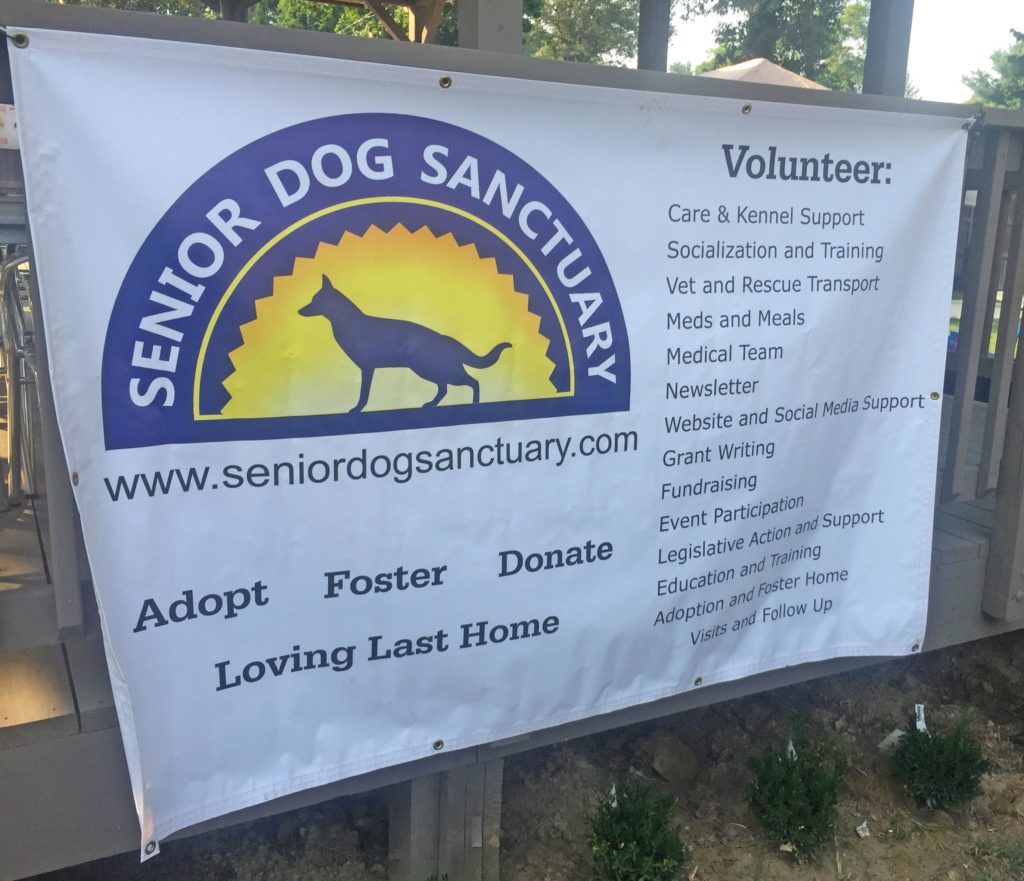
What a Dog Sanctuary does, in a nutshell, is bring people together, give them the resources they need to care for dogs, and connect those dogs with new families. To keep going, a Sanctuary has to continually replenish those “supplies”: people, dogs, resources, adopters. Finding more dogs is painfully easy; there are more than you can possibly serve. It’s the other three that require effort.
It’s not an impossible task, however. The support is out there. Beyond the grounds of the Sanctuary, there is a deep pool of people willing to help, to donate, to adopt. The trick is to find those people and connect with them. To survive, a Sanctuary has to reach out into the community, find a sympathetic audience, state its case, and ask for help. That means, in the long term, a Sanctuary will only be as successful as its Outreach program. It’s a do-or-die necessity.
The good news is that a Senior Dog Sanctuary is not a hard sell. Val says he’s never met anyone, regardless of politics, wealth, or creed, who thinks helping old dogs is a bad idea. The message sells itself. You just have to get it out effectively.
On my visit to SDS, Outreach was one of the areas I was particularly interested in learning more about. I found that SDS has a successful, multifaceted outreach program, run almost exclusively by volunteers. And their goal is not only to support the shelter, but to enrich the lives of the dogs and people involved.
Even an old fart like me realizes that Job One in outreach these days is setting up an effective electronic communications platform. SDS has an excellent website (www.seniordogsanctuary.com), with videos, events and news, and online forms. It’s where I first found out about them. Unlike our amateur-hour website, theirs is maintained by a computer science professional, Matt, who volunteers his time. (I’ll take one of those, please!)
The reason I finally broke down and joined Facebook is that Val told me, in his first phone call, how crucial it is to marketing SDS. (I believe him now. We get four times the traffic on the Facebook page than we do on this website.) They have a very active page, @SeniorDogSanctuaryMD, and use a Facebook consultant to guide their efforts. (Whereas we use Facebook for Dummies. Seriously.) The staff has a private page where they discuss issues, work out schedules, and so on.
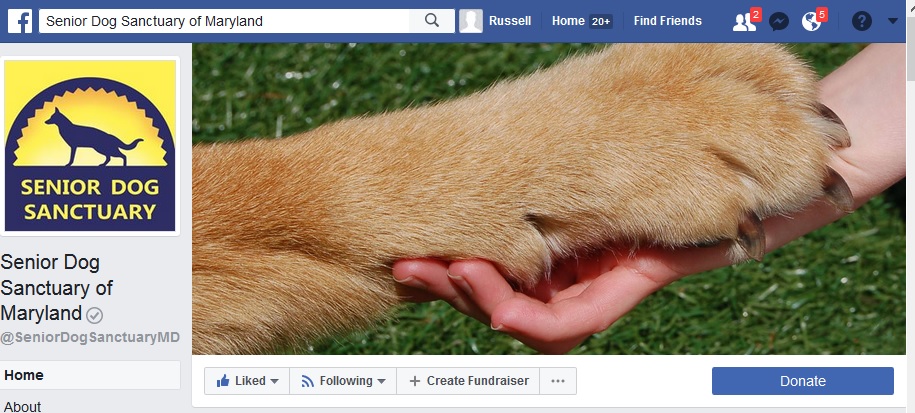
Though electronic communication is vital, it does not eliminate the need for good old-fashioned, face-to-face human contact. SDS has several programs that bring people in to their facility. They hold Open Houses twice a month, inviting the community in for tours , to learn about service opportunities, and meet the dogs. I met several volunteers who first discovered SDS at an Open House.
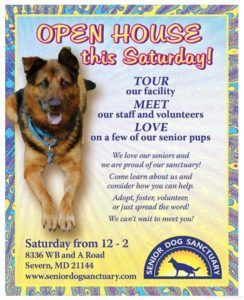
They also have a program called “Book Buddies”, in which children read to the dogs, as well as learning about how to “read” dog behavior. That program was put together by Eve Emerson, a volunteer, who told me it was modeled after a program in Missouri.
Most of the SDS outreach efforts focus on getting their dogs out into the public eye. They have a cool program in which volunteers can check out a dog for a “Doggie Date.” They take the dog to the park, or the beach, or anywhere that people can see them. The dogs wear “Adopt Me” sweaters with the SDS logo, serving as furry, adorable billboards.
Like many shelters, SDS makes frequent appearances at pet stores, fundraisers, and community events. They average around 4 visits a month, with more in the spring and fewer in the winter. When they go to a store like PetSmart, they bring a banner, some literature, and one or two dogs — because who can resist coming over to pet a dog? They also bring a notebook with bios on all of their dogs.
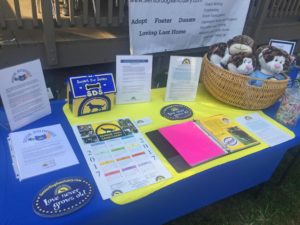
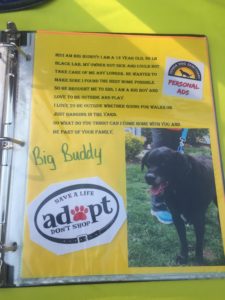
At pet store events, they put out a donation box, but the main goal is making connections with new people. Sometimes, one of the customers will bond with one of the dogs and decide to adopt, or to visit the shelter to meet another dog. More often, the message will click, and a customer will decide to volunteer, or donate an old dog bed, or food, or even money. You never know. The important thing is to plant a seed in their minds. Most won’t sprout, but a few will.
On the evening of my visit, I accompanied Val to a “Yappy Hour” event at the Severna Park Taphouse, an area bar and grill. (I was strangely proud to see a Boulevard Beer sign on their fence; go KC!)
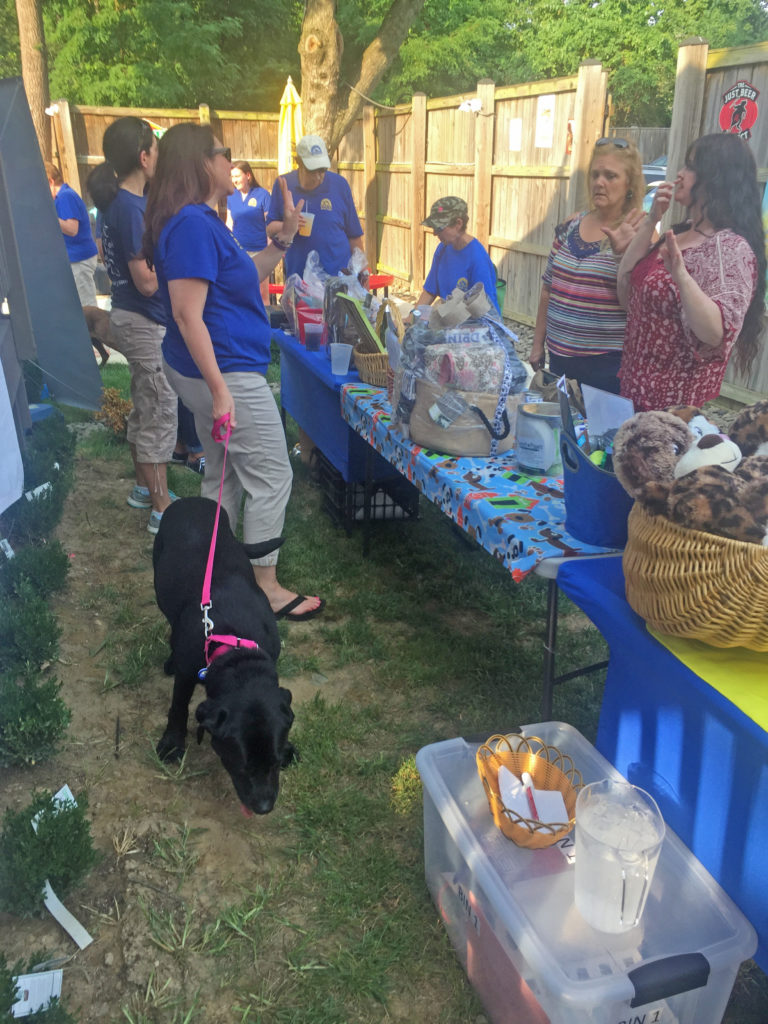
The event was put on by four for-profit dog-related businesses for the benefit of SDS. The main sponsor was Dogwood Acres, a doggie day spa. There were also booths for a dog training service, an all-natural pet food store named Bark!, and Healing Paws, a veterinary wellness center. (The ladies from Bark! did an excellent job convincing a skeptic — me — of the importance of quality pet food. My poor dogs and their $1 Canine Carry-Out treats!)
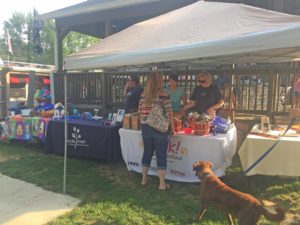
These and other businesses donated items and services, which SDS volunteers packaged into gift baskets which were raffled off, making around $700.
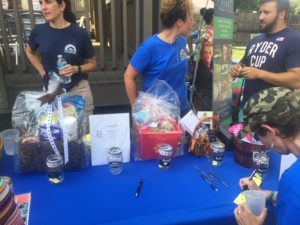
Outings such as these are planned and carried out by a volunteer Events Committee. After the raffle, I had a long, productive talk with Jenna, the Events Coordinator; she’s the one in the middle of the picture above, with her head turned. Usually, she schedules the events, then recruits volunteers to man the booth. That takes her about 10 hours a week, on top of her full-time job, but like Barb, she seems an inexhaustible ball of energy. She shared a ton of helpful advice, like which events to avoid, where to place your table, and how you always need a spare volunteer to cover the one who doesn’t show up. She said, for fundraising, hosting a few large events is more effective than many smaller ones. SDS is planning a major “Walk” event for the fall, and a “Senior (Dog) Prom” for the spring.
I came away from my SDS visit with a much better understanding of what a Sanctuary needs to do to connect with the rest of the world, and why. A Sanctuary is a community effort, and to be sustainable, you have to constantly reach out to the public, to involve them and ask for their support. It is a big task, but if you find the right volunteers and empower them, the message will find fertile ground. Surely the conditions are just as favorable in Kansas City as they are in Maryland.
